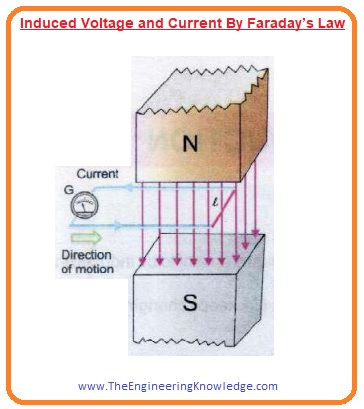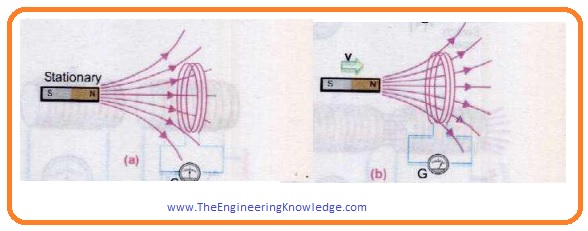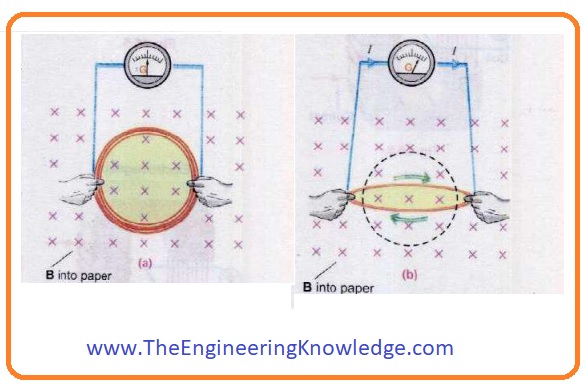 Hello, fellows, I hope all of you are having fun in your life. In today’s tutorial, we will discuss What is Faraday’s Law and its practical implementation. The phenomena of electromagnetic induction was explained by Michael Faraday who was belonged to England and most of his work was on electromagnetism in 1831. After faraday Joseph Henry in 1832 who was belonged to America also work on electromagnetic induction. But the final details of this phenomenon was first time published by Faraday, to find this he performed an experiment. He wound to different coils on the opposite side of the ring and connect one wire with the input supply.
Hello, fellows, I hope all of you are having fun in your life. In today’s tutorial, we will discuss What is Faraday’s Law and its practical implementation. The phenomena of electromagnetic induction was explained by Michael Faraday who was belonged to England and most of his work was on electromagnetism in 1831. After faraday Joseph Henry in 1832 who was belonged to America also work on electromagnetic induction. But the final details of this phenomenon was first time published by Faraday, to find this he performed an experiment. He wound to different coils on the opposite side of the ring and connect one wire with the input supply.
He observed that the variation of current in first wire also induce some current and the value of current he found by using a galvanometer. This current production in the second windings was due to flux linking in it that was coming from the first windings. After that, he found some other effect like he finds transients current in a wire when a magnet comes to that wire. In today’s post, we will have a look at work, applications, and some other parameters of this law. So let’s get started with what is Faraday’s Law.
What is Faraday’s Law
- Faraday’s law states that when any conductor is placed in any varying magnetic field the voltage will induce in that conductor.
Emf= dø/dt
- Faraday’s law is the fundamental rule to explain the rule magnetic field in different electrical circuitry.
- In almost each and every electrical machine either ac machines like an induction motor, induction generator, synchronous motor, synchronous generator, or dc machines as dc motor, dc generator or transformer also follows the Faraday’s law of electromagnetic induction.
- For a practical understanding of Faraday’s law, we perform an experiment.
- In the given figure you can observe that there are a bar magnet and galvanometer, we move this bar magnet and see its flux variation and current production in the galvanometer.
- In first figure that is denoted as (a) you can see that there is no current value is shown on the galvanometer as the magnet is static.
- In the second figure that is denoted that (b) there is some value of current at the galvanometer it due to movement of magnet in this case magnet is moving is in a left direction.
- In third figure that is (c) there is again some value of current at the galvanometer but in opposite direction as the now the magnet direction towards right.
- From this experiment we can see the practical implementation of Faraday’s Law, when there is variation in flux then the voltage is induced then there is no variation in flux there is no emf induced.
Induced Voltage and Current By Faraday’s Law
- For practical implementation of Faraday’s law and how it generates voltage, we discuss some experiments that will clear your concepts about the Faradays’ Law.
- Let’s suppose that a wire is put in the field of permanent magnet and joined with the galvanometer at the end terminals.
- This is like a closed-loop arrangement. At the start when is there is no movement in the wire zero value of current is shown at the galvanometer.
- If move changes the position of a loop from left to right voltage induce in the loop and current shows on the meter. When we stop the loop then the zero deflection at the meter.
- If we move loop from right to left then there is again current at the galvanometer. But now in opposite direction.
- The value of current produce depends on speed with which we moving the loop and its resistance.
- If we change the resistance of loop and then move it in the loop with same speed then the value of the term (IxR) remains same with the variation of resistance.
I x R = constant
- It is the induced EMF that cause to produce current in the loop. The value of current can be increased by doing some factors.
- By increasing the strength of field.
- Moving loop faster.
- Replacing wire with large no of turns loop.
- Now we do this experiment with a different way, now we keep loop static and vary the position of a magnet then there is emf induce in the loop and deflection on the meter screen.
- It is the relative motion among the magnet and the wire loop that generate the voltage induced in the loop.
- It is the value of flux that varies in the loop and produces emf in it. Larger the value of flux variation then there will be larger emf induced in the loop.
- Now we perform some other experiments for the understanding of voltage induces.
- In given figure, you can see that loop is linked with the galvanometer and bar magnet is placed near it.
- When the magnet is static there is zero current at galvanometer it is denoted as a in figure and when we move magnet toward the loop then the current flow through the coil and if we move away magnet from the loop then there is again current produces in the loop. It is denoted as b.
- We do and another experiment for the current production by keeping the value of field constant and varying the area of the loop.
- In figure a you can see that the loop and field both are constant then there is zero value of current at galvanometer.
- Now if we vary the area of loop then voltage induced in the loop and deflection shows on the meter.
- The voltage induces till that point the distortion occurs in the loop after that the zero voltage induces in it.
- If we again restore the loop shape in previous state then there is again voltage induces in it. It is denoted as b in given figure.
- Now we keeping field value constant and loop area also constant rotates loop in the field then there is again voltage induced in the loop and some deflection at the meter. It is shown in figure.
- It is the basic principle of a generator.
- Now we perform another experiment in which we will see that how a flux variation in first coil induces a voltage in second coil.
- In given figure you can see that there are 2 coils first one is ‘P’ and second is ‘S’. the first coil is connected with the rheostat, switch, and battery. While ‘S’ coil is connected with the galvanometer.
- No if we closed the switch of coil ‘P’ then there is current value is shown in the galvanometer of the second meter and then it comes to again zero points.
- If we open the switch again the current is shown at the second coil galvanometer. It as due to the flux variation in the ‘S’ coil current produces, the important thing is that current only produces when we open and close the switch during this process current in first coil start from zero to maximum then maximum to zero. Than it flows continuously.
- These phenomena of flux current generation due to one coil in second coil is called mutual induction. The working of transformer relies on this principle.
Faraday’s Law Application
- These are some applications of Faraday’s Law that are described here. It mostly employed in industrial machines and medical equipment construction.
- The working of transformer follows the Faraday’s law of electromagnetic induction.
- Generators also follow this principle.
- The induction cooler operation also relies on the working of Faraday’s law.
- Some musical instruments also follow this law such as electric guitar.
So friends that is the detailed post about Faraday Law I have mentioned each and every parameter related to Faraday law. If you have any queries about this law ask in comments. See you in the next post. Have a good day..









